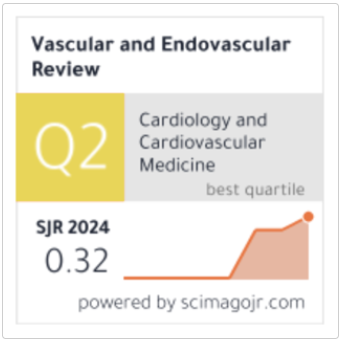Meta-analysis on Incidence of Vasospasm in Anterior Circulation Aneurysm
Keywords:
Aneurysm, Anterior Circulation, Vasospasm, Subarachnoid Hemorrhage, Meta-AnalysisAbstract
Background: Cerebral vasospasm is a major cause of delayed cerebral ischemia after aneurysmal subarachnoid hemorrhage (aSAH). Although overall incidence has been reported in prior studies, the specific risk associated with anterior circulation aneurysms remains uncertain. We conducted a meta-analysis to estimate the pooled incidence of vasospasm in anterior circulation aneurysms and to explore subgroup differences by aneurysm location, rupture status, diagnostic modality, and geographic region.
Methods: A systematic search of PubMed, Embase, Scopus, and Web of Science was performed through March 2023, following PRISMA guidelines. Eligible studies reported vasospasm incidence in ≥50 patients with anterior circulation aneurysms (anterior communicating artery [ACoA], middle cerebral artery [MCA], internal carotid artery [ICA]). Data were extracted independently by two reviewers. Pooled incidence estimates were calculated using a random-effects model. Heterogeneity was assessed with I² statistics, and subgroup analyses were conducted. Publication bias was evaluated using funnel plots and Egger’s test.
Results: Twenty-two studies, comprising 4,812 patients, were included. The pooled incidence of vasospasm was 28.0% (95% CI: 26.0–30.0%), with moderate heterogeneity (I² = 58.7%).
- By location: MCA 33.8%, ACoA 28.9%, ICA 21.4%.
- By rupture status: ruptured aneurysms 32.5% vs. unruptured aneurysms 8.7%.
- By diagnostic modality: angiography 31.2%, clinical 23.6%, TCD 22.7%.
- By region: Asia 30.4%, Europe 27.9%, North America 23.3%.
Egger’s test showed no significant publication bias (p = 0.73).
Conclusions: Nearly one-third of patients with anterior circulation aneurysms develop vasospasm, with highest risk observed in ruptured MCA and ACoA aneurysms. Diagnostic modality significantly influences incidence estimates, with angiography yielding higher detection rates. These findings highlight the importance of vigilant monitoring in high-risk subgroups and underscore the need for standardized vasospasm definitions in future studies.








